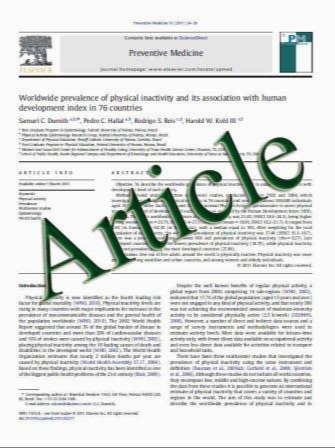Vitamin D status in relation to obesity, bone mineral density, bone turnover markers and vitamin D receptor genotypes in healthy Saudi pre- and postmenopausal women
- نوع فایل : کتاب
- زبان : انگلیسی
- مؤلف : M.-S. M. Ardawi & M. H. Qari & A. A. Rouzi & A. A. Maimani & R. M. Raddadi
- چاپ و سال / کشور: 2010
Description
Summary The various factors that may contribute to vitamin D deficiency or insufficiency were examined among healthy Saudi pre- and postmenopausal women. Vitamin D deficiency was highly prevalent among studied Saudi women with obesity, poor sunlight exposure, poor dietary vitamin D supplementation and age as the main risk factors. Introduction The various factors that may contribute to vitamin D deficiency or insufficiency in relation to bone health among Saudi women are not known. The main objectives of the present study were to determine the factors influencing vitamin D status in relation to serum 25- hydroxyvitamin D (25(OH)D), intact parathyroid hormone (PTH), bone turnover markers (BTMs), bone mineral density (BMD), and vitamin D receptor genotype (VDR) in healthy Saudi pre- and postmenopausal women. Methods A total number of 1,172 healthy Saudi women living in the Jeddah area were randomly selected and studied. Anthropometric parameters, socioeconomic status, sun exposure index together with serum levels of 25(OH)D, calcitriol, intact PTH, Ca, PO4, Mg, creatinine, albumin, and biochemical BTMs were measured. BMD was measured by a dual energy X-ray absorptiometry and VDR genotypes were also determined. Results About 80.0% of Saudi women studied exhibited vitamin D deficiency (serum 25(OH)D<50.0 nmol/L) with only 11.8% of all women were considered with adequate vitamin D status (serum 25(OH)D>75 nmol/L). Secondary hyperparathyroidism was evident in 18.5% and 24.6% in preand postmenopausal women with 25(OH)D<50 nmol/L. Serum25(OH)D was lower (P<0.001) and intact PTH higher (P<0.001) in the upper quintiles of body mass index (BMI) and waist-to-hip ratio (WHR). Multiple linear regression analysis showed that BMI, sun exposure index, poor dietary vitamin D supplementation, WHR, and age were independent positive predictors of serum 25(OH)D values. Conclusions Vitamin D deficiency is highly prevalent among healthy Saudi pre-and postmenopausal women and largely attributed to obesity, poor exposure to sunlight, poor dietary vitamin D supplementation, and age.
Osteoporos Int (2011) 22:463–475 DOI 10.1007/s00198-010-1249-7 Received: 20 January 2010 / Accepted: 22 March 2010 / Published online: 30 April 2010


